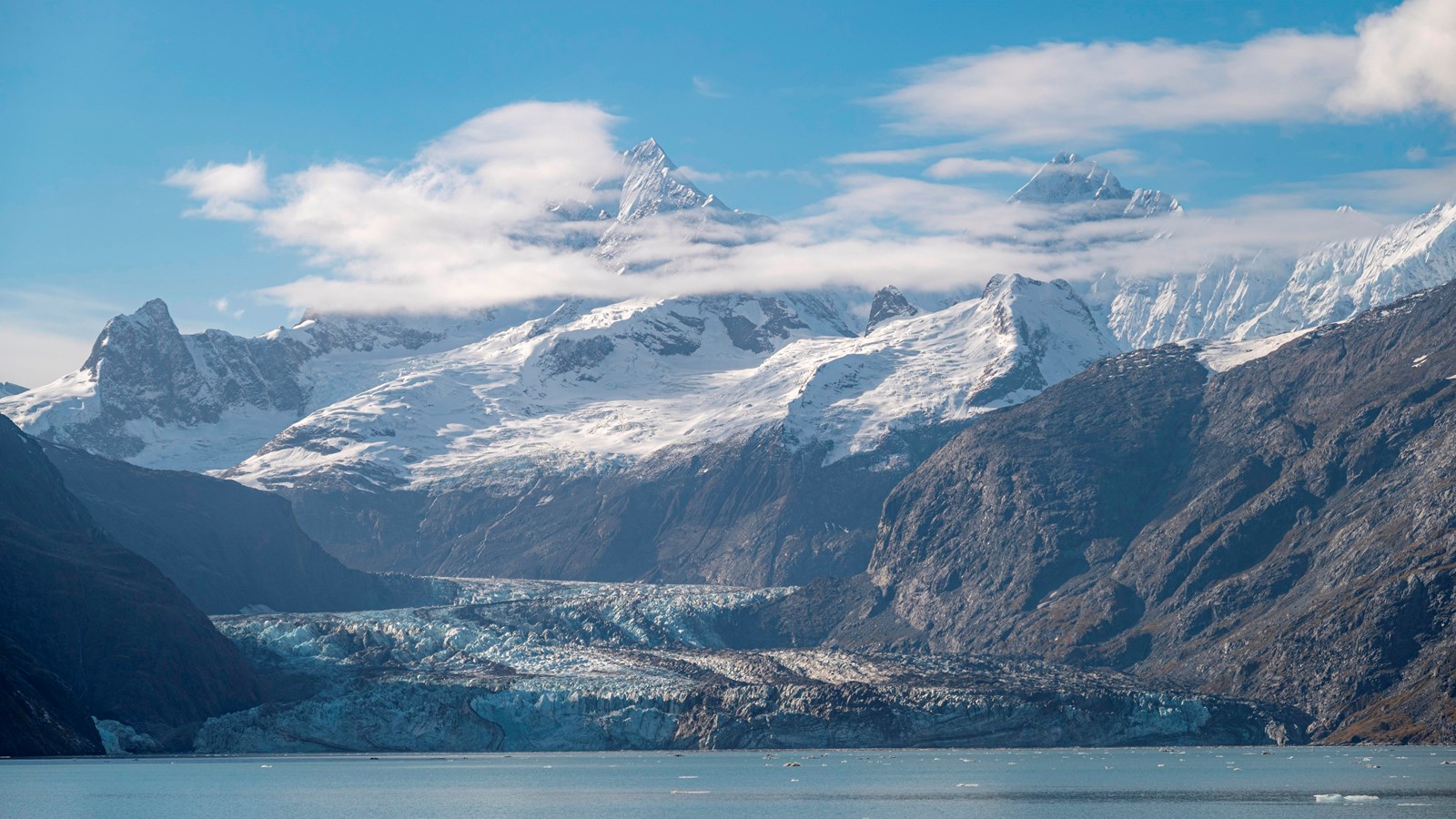Last updated: April 1, 2021
Place
Johns Hopkins Glacier

NPS Photo/S. Tevebaugh
A Stunning Glacial Fjord
Johns Hopkins Glacier is found at the end of Johns Hopkins Inlet, in the farthest northwest of the Glacier Bay fjord.
A stunning scene, the glacier flows down a valley flanked by towering mountains to reach the sea.
The glacier fills the end of the fjord, stretching about 1-mile wide, and reaching 250 feet high above the waterline. The ice front extends under sea level, to a depth of approximately 200 feet, where an underwater moraine protects the deepest extent of the glacial ice like armor against the warm ocean water. Formed from numerous tributary glaciers, the length of Johns Hopkins glacier is about 12 miles from the source in the Fairweather Mountain peaks. The tributary glaciers contribute rocks scraped off the mountainsides along the main glacier. These stripes of rock, called lateral moraines, join at glacial intersection, creating racing stripes along the length of the glacier, called medial moraines. The debris in these moraines can be seen in the ice face and extending up-glacier as prominent black bands. This debris is transported in and on the ice and released either by melting of the ice face or calving of icebergs into Johns Hopkins Inlet. Melt-water from the glacier is discharged from submarine tunnels located near both the eastern and western edges of the glacier, carrying ground up rock referred to as glacial flour, creating a design of muddy brown fresh water mixing with the clearer salt water. Sometimes this water emerges at the inlet surface as fountains. Black legged kittiwakes are commonly seen diving, floating, and feeding where the meltwater upwells along the ice face and harbor seals are often seen basking in safety on top of the ice bergs throughout the inlet.
